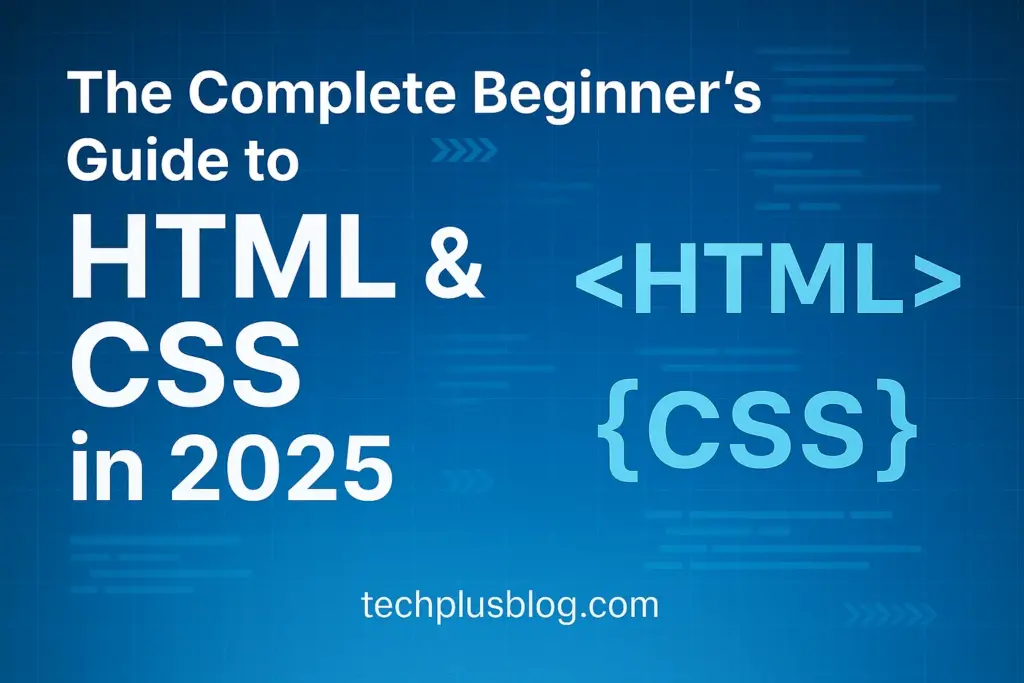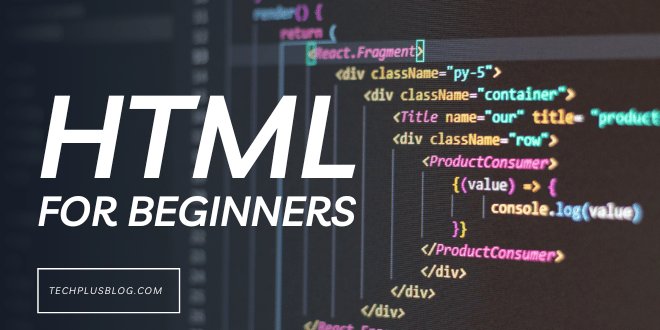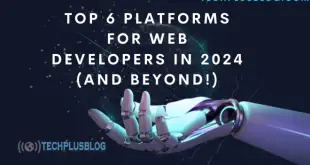Why HTML & CSS Are the Foundation of the Web
Every website, no matter how advanced, is built on HTML and CSS.
- HTML (HyperText Markup Language) gives a webpage its structure — it’s the skeleton that holds everything together.
- CSS (Cascading Style Sheets) makes that skeleton look good — adding colors, fonts, layouts, and animations.
In other words:
- HTML is what you see on the page.
- CSS is how it looks and feels.
Even in 2025, with AI tools like V0 by Vercel and no-code platforms like Webflow, HTML and CSS remain essential because all modern tools eventually generate HTML & CSS in the background.
💡 If you’re starting your journey to becoming a developer, our Step-by-Step Guide on How to Become a Web Developer explains how these languages fit into the bigger picture of web development.
What is HTML?

HTML, short for HyperText Markup Language, is the backbone of every website you visit. Think of it as a set of instructions you give to a web browser so it knows what to display and in what order. Without HTML, your browser would have no idea where the title, images, or paragraphs go — you’d just see raw, unformatted text and images scattered around.
HTML is not a programming language like JavaScript or Python — instead, it’s a markup language. That means it uses tags to mark different pieces of content and tell the browser their role. For example:
- A
<h1>tag tells the browser, “This is the main heading.” - A
<p>tag says, “This is a paragraph of text.” - An
<img>tag instructs it to display an image.
How HTML Works Behind the Scenes
When you type a website URL in your browser, the server sends an HTML file to your device. Your browser reads it from top to bottom and builds the page visually on your screen. Along the way, it may also pull in linked CSS files (for styling) and JavaScript files (for interactivity).
HTML’s Role in 2025 Web Development
While we now have advanced frameworks like React, Angular, and even AI-assisted site builders such as V0 by Vercel, HTML hasn’t lost relevance. These modern tools still generate HTML in the background, meaning a developer’s understanding of HTML helps when debugging, customizing, or optimizing code for SEO.
For example, using the wrong heading hierarchy (<h1> followed directly by <h4> with no <h2> or <h3>) can confuse search engines and harm rankings — something SEO best practices would caution against.
Basic HTML Structure
Every HTML page follows a standard structure:
<!DOCTYPE html>
<html lang="en">
<head>
<meta charset="UTF-8">
<meta name="viewport" content="width=device-width, initial-scale=1.0">
<title>My First Website</title>
</head>
<body>
<h1>Hello World!</h1>
<p>This is my first HTML page in 2025.</p>
</body>
</html>
Breaking It Down
<!DOCTYPE html>— Tells the browser you’re using HTML5 (the latest version).<html lang="en">— Opens the HTML document and specifies the language.<head>— Holds metadata like page title, description, and linked CSS/JS files.<body>— Contains everything you see on the webpage itself.
HTML Tags & Elements
Tags are keywords wrapped in angle brackets < >. Most tags have an opening and a closing version:
<p>This is a paragraph.</p>
- Opening tag:
<p> - Closing tag:
</p> - The text in between is the content.
Some tags are self-closing, meaning they don’t need a closing tag:
htmlSalinEdit<img src="image.jpg" alt="A description of the image">
HTML in Action
Imagine you’re writing a simple blog post about web developer tools. Here’s what a basic HTML snippet might look like:
<article>
<h1>Best Web Developer Tools in 2025</h1>
<p>Here are my top picks for this year’s must-have tools.</p>
<ul>
<li>Visual Studio Code</li>
<li>CodePen</li>
<li>Chrome DevTools</li>
</ul>
</article>
This is exactly the type of content you might expand upon using our Web Developer Tools for 2025 guide.
Pro Tips for Learning HTML
- Use Semantic Tags — Tags like
<header>,<main>, and<footer>give meaning to your content, which helps SEO and accessibility. - Practice Daily — Even 10–15 minutes of practice in CodePen can speed up learning.
- Validate Your Code — Use W3C Validator to check for errors.
- Combine With CSS Early — Styling your HTML right away makes learning more fun.
💡 Once you’re comfortable with HTML basics, move on to CSS (next section) so you can start building complete, visually appealing web pages.
What is CSS?
CSS stands for Cascading Style Sheets, and it’s the language that controls how your HTML content looks. If HTML is the skeleton of a website, CSS is the skin, hair, clothing, and accessories that make it visually appealing.
Without CSS, every website would look like plain black text on a white background — functional but boring. CSS is what adds colors, fonts, layouts, spacing, animations, and responsive design to turn a basic HTML page into something beautiful and professional.
Why “Cascading”?
The term cascading means that styles can come from different sources and “cascade” down in a specific order of priority:
- Browser default styles — Every browser has a basic style sheet.
- External CSS files — Separate
.cssfiles linked to your HTML. - Internal styles — CSS written inside a
<style>tag in the HTML<head>. - Inline styles — CSS written directly inside an HTML element.
When there’s a conflict, CSS follows a specificity rule: inline styles override internal styles, which override external styles, which override browser defaults.
CSS in 2025 — More Than Just Colors
Over the years, CSS has evolved into a powerful design language that can:
- Create grid-based layouts for complex designs.
- Add animations and transitions for interactive effects.
- Adapt your site for different screen sizes with media queries.
- Even style elements based on user preferences (e.g., dark mode).
Modern CSS is now a core part of web frameworks like ReactJS and Angular, where it can be scoped to individual components for cleaner, modular design.
Ways to Add CSS to a Web Page
There are three main ways to use CSS:
1. Inline CSS (Quick but Messy)
Adding styles directly into an HTML element:
htmlSalinEdit<p style="color: red; font-size: 18px;">This text is red and larger.</p>
Pros: Quick for small changes.
Cons: Not reusable, hard to maintain.
2. Internal CSS (Better for Single Pages)
Defined inside a <style> tag in your HTML file:
<style>
p {
color: blue;
font-size: 16px;
}
</style>
Pros: Keeps styles in one place per page.
Cons: Not ideal for large websites.
3. External CSS (Best Practice)
A separate .css file linked in your HTML <head>:
htmlSalinEdit<link rel="stylesheet" href="styles.css">
Pros: Reusable across multiple pages, easy to update.
Cons: Requires multiple files to be loaded.
💡 If you’re building a large site, external CSS is the gold standard for clean and scalable design — something we recommend in our How to Build a Modern Website from Scratch.
Example CSS Snippet
Here’s how you might style a basic HTML page:
body {
background-color: #f8f9fa;
font-family: Arial, sans-serif;
margin: 0;
padding: 0;
}
h1 {
color: #007BFF;
text-align: center;
margin-top: 20px;
}
p {
color: #333;
font-size: 1.1rem;
max-width: 600px;
margin: auto;
}
- The body rule sets the page background, font, and removes default spacing.
- The h1 rule sets color, centers text, and adds spacing.
- The p rule styles paragraphs for readability.
Why CSS is Essential for Beginners
Learning CSS early helps you:
- Make your projects visually appealing (which keeps users engaged).
- Understand responsive design principles for mobile users.
- Build a personal style and design identity.
Plus, if you’re aiming for a career in front-end development, CSS skills are non-negotiable. Employers expect you to know how to turn a wireframe or mockup into a fully styled web page.
💡 Once you’re confident with CSS basics, you can explore CSS frameworks like Bootstrap, Tailwind, or Materialize to speed up development. But remember — frameworks are tools; the foundation is always plain CSS.
Essential HTML Tags in 2025
Here are some HTML tags you’ll use constantly:
| Tag | Purpose |
|---|---|
<header> | Website header (logo, navigation) |
<nav> | Navigation menu |
<section> | Groups related content |
<article> | Standalone piece of content |
<footer> | Bottom of the page |
<h1> to <h6> | Headings |
<p> | Paragraph text |
<img> | Display images |
<a> | Create hyperlinks |
<ul> / <ol> / <li> | Lists |
<form> | User input forms |
💡 To see how tags like <header> and <footer> work in real projects, check our Angular JavaScript Superhero Guide.
Basic CSS Properties You Need to Know
CSS is massive, but these properties form the core skills every developer needs:
Colors
color: red; /* Named color */
color: #ff0000; /* Hex code */
color: rgb(255, 0, 0); /* RGB value */
Fonts
font-family: 'Arial', sans-serif;
font-size: 16px;
font-weight: bold;
Layouts
- Flexbox for aligning elements.
- Grid for complex layouts.
- Margin & Padding for spacing.
- Position for element placement.
💡 Our Web Developer Tools for 2025 list includes browser tools that help visualize CSS changes in real time.
Responsive Design Basics (Media Queries)
With mobile-first design in 2025, responsive layouts are non-negotiable.
Example:
@media (max-width: 768px) {
body {
font-size: 14px;
}
h1 {
font-size: 2rem;
}
}
This ensures your site looks great on tablets and phones.
💡 Learn about cross-platform adaptability in our iOS 17 Features Guide.
Tools to Practice HTML & CSS
You don’t need expensive software. Start with:
- CodePen — Great for live HTML/CSS experiments.
- Visual Studio Code — Popular, lightweight editor.
- Browser DevTools — Inspect & modify elements in real time.
💡 If you want to skip manual coding for your first prototype, check our Webflow — The No-Code Platform.
Beginner Mistakes to Avoid
- Not using semantic HTML — Use proper tags for meaning, not just appearance.
- Inline CSS abuse — Keep your styles in an external stylesheet.
- No mobile testing — Always check on multiple devices.
- Copy-pasting without learning — Understand before using.
- Not validating code — Use W3C Validator to check errors.
Conclusion — Start Small, Build Big
HTML and CSS are your entry ticket to the web development world.
Once you master them, you can move on to JavaScript, frameworks, and backend programming.
Start today by creating a simple portfolio site. Our Guide to Creating a Portfolio Website That Gets You Hired walks you through it step by step.
Remember: every expert developer once wrote their first <h1>Hello World!</h1>.
Your journey starts now.
 TechPlusBlog Tech News, Web Development, Gadgets
TechPlusBlog Tech News, Web Development, Gadgets

